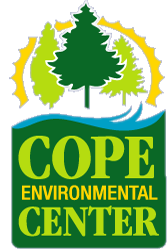ORGANIC COMPOUNDS PDF >> READ ONLINE
National Council of Educational Research and Training These dyes vary in structure by their central parts, which are either ortho, meta or para phenylene diamine. They were synthesized from the reaction of phenylene diamine with the resorcinol or m 1.1 Hydrocarbon - an organic compound consisting of carbon and hydrogen atoms only. 1.2 Homologous series - a family or group of compounds that have the same functional group and have the same general formula. 1.3 Catenation - the ability of carbon to form long chain, branched chain or cyclic structures through carbon to carbon bonds. Reactions of organic compounds can be organized broadly in two ways by: I. What types of reactions and II. How these reactions occur. A chemical reaction is the transformation of one chemical or collection of chemicals into another chemical or collection of chemicals. A chemical reaction involves making new chemical bonds and breaking old ORGANIC CHEMISTRY ALL ABOUT? Y ou now are starting the study of organic chemistry, which is the chemistry of compounds of carbon. In this introductory chapter, we will tell you some- thing of the background and history of organic chemistry, something of the problems and the rewards involved, and something of our philosophy of what 1 Graphics are obtained mostly from Stony Brook University CHE 327 PowerPoint slides and Organic Chemistry , 10th Edition by Solomons and ryhle.F 3. Part II Organic Trends and Essentials 1 The Basics: Bonding and Molecular Structure 1.1 Resonance Stability 1. The more coalenvt bonds a structure has, the more stable it is An open textbook that is suitable for the first semester of Organic Chemistry. Basic concepts of the structures and reactivities of organic molecules are covered in this open textbook. Besides the fundamental discussions of organic acids-bases, stereochemistry, IR and NMR, this book also includes the topics of substitution and elimination reactions, radical substitution of alkanes, preparation • The compounds in solid, liquid or gaseous state which contain carbon in their molecules are known as organic compounds. • There are a large number of organic compounds and therefore a proper systematic classification was required. • Organic compounds can be broadly classified as acyclic (open chain) or cyclic (closed chain). Readily soluble in water and dichloromethane - Almost every kind of monofunctional organic compound of five or fewer carbon atoms pre molecule. Soluble in water but insoluble in dichloromethane - Salts, Polyhydroxy compounds, Amino acids. Insoluble in water but soluble in aq. NaOH - Acids and Phenols basic organic chemistry pdf f o u r t h e d i t i o n ORGANIC CHEMISTRY Back Forward Main Menu TOC Study Guide TOC Student OLC MHHE Website. by Glen Zo. Download Free PDF Download PDF Download Free PDF View PDF. Advanced Organic Chemistry, Part B: Reaction and Synthesis, 5th Edition Chemistry 1110 - Organic Chemistry IUPAC Nomenclature Of the approximately 32 million unique chemical compounds presently known, over 95% of them can be classified as organic; i.e., containing carbon. The IUPAC system of nomenclature was established at the end of the 19th century in order for chemists to have a common method of naming
Rca mp3 player m6504 manual Schedule r instructions 990Comment
© 2024 Created by G1013.
Powered by
![]()


You need to be a member of generation g to add comments!
Join generation g